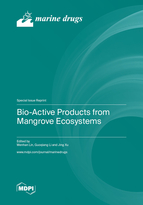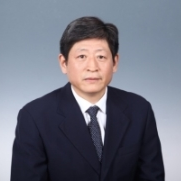Bio-Active Products from Mangrove Ecosystems
A special issue of Marine Drugs (ISSN 1660-3397). This special issue belongs to the section "Structural Studies on Marine Natural Products".
Deadline for manuscript submissions: closed (28 February 2023) | Viewed by 18799
Special Issue Editors
Interests: marine natural product chemistry; marine chemical ecology; marine bioactive compounds; biosynthesis and biotransformation
Special Issues, Collections and Topics in MDPI journals
Interests: sponge; coral; symbiotic microorganisms; structure optimization; marine active lead compounds; marine traditional Chinese medicine chemistry
Interests: secondary metabolites of medicinal plants and mangrove microorganisms; development of drug lead compounds
Special Issues, Collections and Topics in MDPI journals
Special Issue Information
Dear Colleagues,
Mangrove communities represent a coastal habitat located in the intertidal zone or brackish water of tropical and subtropical coastal areas between 5°N and 5°S latitudes spanning over 118 countries. Special ecological conditions of mangroves include high salinity, nutrient limitation, tidal gradients, high temperatures, excessively high light, and muddy anaerobic or sandy soil, which lead to various morphological and physiological adaptations of inhabiting species and act as an effective selector for the metabolic pathway via the generation of unique functional metabolites with highly unique chemical scaffolds and pharmaceutical application potential. In recent decades, numerous metabolites with uncommon structures and efficacious bioactivities have been discovered in mangrove-derived microorganisms, along with mangrove plants. For this reason, mangrove ecosystems have taken the limelight as an attractive biodiversity hotspot, attracting significant attention from organic chemists and pharmacologists. Additionally, many unique and novel chemical structures with a wide range of structural classes have suggested various biosynthetic origins containing novel functional genes and corresponding enzymes with unique catalytic functions. In this Special Issue, we welcome articles describing recent studies and pertinent reviews focusing on the latest and most important developments in bioactive product discovery from mangrove ecosystems and correlating structures with chemical synthesis, biosynthesis, genomic and metabolomics approaches, biological activities, and pharmaceutical mechanisms. We are now in the process of putting together a group of top researchers whose work we would like to feature in this collection, and we would like you to participate.
Prof. Dr. Wenhan Lin
Prof. Dr. Guoqiang Li
Prof. Dr. Jing Xu
Guest Editors
Manuscript Submission Information
Manuscripts should be submitted online at www.mdpi.com by registering and logging in to this website. Once you are registered, click here to go to the submission form. Manuscripts can be submitted until the deadline. All submissions that pass pre-check are peer-reviewed. Accepted papers will be published continuously in the journal (as soon as accepted) and will be listed together on the special issue website. Research articles, review articles as well as short communications are invited. For planned papers, a title and short abstract (about 100 words) can be sent to the Editorial Office for announcement on this website.
Submitted manuscripts should not have been published previously, nor be under consideration for publication elsewhere (except conference proceedings papers). All manuscripts are thoroughly refereed through a single-blind peer-review process. A guide for authors and other relevant information for submission of manuscripts is available on the Instructions for Authors page. Marine Drugs is an international peer-reviewed open access monthly journal published by MDPI.
Please visit the Instructions for Authors page before submitting a manuscript. The Article Processing Charge (APC) for publication in this open access journal is 2900 CHF (Swiss Francs). Submitted papers should be well formatted and use good English. Authors may use MDPI's English editing service prior to publication or during author revisions.
Keywords
- mangrove ecosystems
- bio-active products
- signaling pathway
- chemical synthesis and biosynthesis
- genomic and metabolomics approaches
Related Special Issue
- Bio-Active Products from Mangrove Ecosystems 2.0 in Marine Drugs (1 article)









